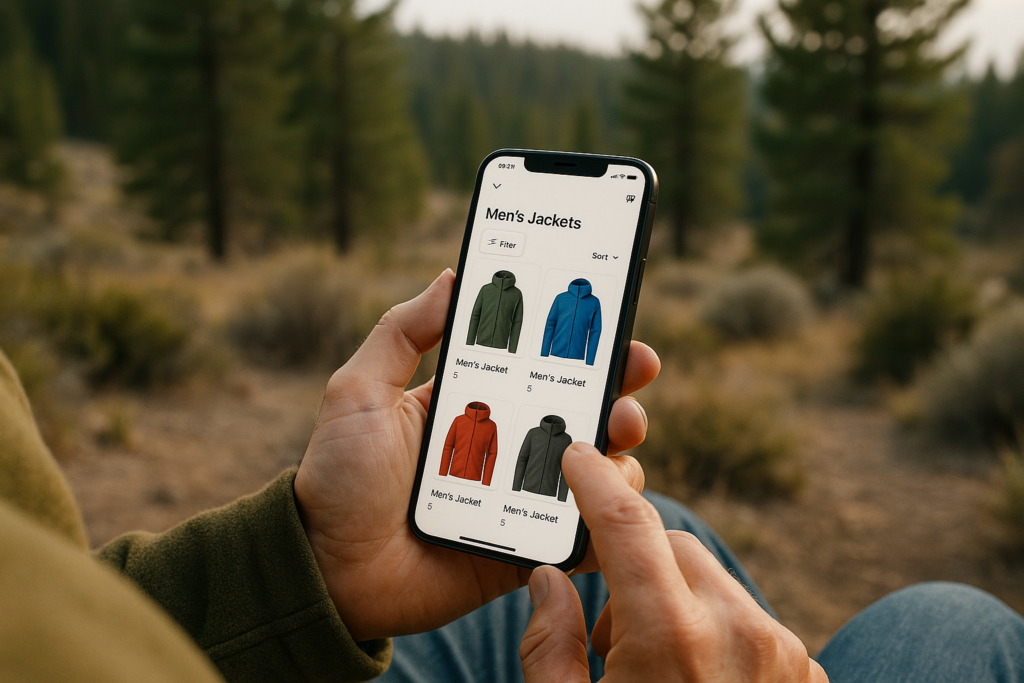If you’re new to website planning, don’t overlook the importance of the site’s architecture, which refers to how the pages and categories are organized.
I like to think of a disorganized website like a grocery store that’s been restocked by someone who has never been in one before. If I venture into the dairy section and find milk, butter, and cookies, I might be delighted about the extra find (maybe), but I’ll likely be confused. If these surprises continue, I’d be inclined to ditch the cart and walk out.
Navigating a website with a messy, chaotic architecture offers an experience similar to a disorganized grocery store (leading to frustration, cart abandonment, and avoidance). But taking the time to display what’s on your site and organizing its structure will help visitors while offering these benefits:
Improving the User Experience
Imagine you’re back in the grocery store and there are no signs, aisle numbers, or other relevant markings. Going up and down every aisle isn’t an option for me, and maybe it isn’t for you, either. A website without navigational cues is like this unmarked supermarket, and unfortunately, most customers aren’t up for endless scrolling to find the item or information they’re looking for.
A well-structured site architecture offers guests a frustration-free experience in reading your content, shopping for products, or finding information. Three architecture conventions you can implement to improve your website architecture—and user experience—include:
- Properly Nested Navigation & Categories– Make skipping between site sections a cinch.
- Headers – H1s, H2s and H3s should be used to prioritize content on the page, with H1 being the theme of the page itself, H2s being sub-themes, and H3s being sub-themes of the H2 they’re nested within.
- Breadcrumbs – These links at the top of the page (as shown above) highlight visitors’ location so getting back to a previous page is easy.
- Internal links – Use anchor text and related links to move readers from one page to another and suggest other topics of interest with minimal searching.
When browsing is seamless, users stay longer and visit often, becoming loyal customers quickly. Search engines also take note of sites with low bounce rates and longer browse times, rewarding you with better positions in the SERPs.
Assisting Search Engines
Without planograms, a grocery store would never look as organized as in the photo above. A website’s sitemap acts much like a planogram, but for search engines instead of store employees. This visual representation of the site’s organization shows every item’s place and importance, and it’s easy for the search engine to decipher updates and other information.
When a website is structured logically and you’ve submitted a sitemap of the architecture, the crawling process is simplified, allowing more pages to be visited and indexed within a given timeframe. Easy indexing strengthens a site’s technical SEO, whether you’re focused on Google or you’re optimizing for an alternative search engine.
Building Site Authority
Imagine if the grocery store from before was organized but the best products were all located in one section and getting to other departments was difficult and cumbersome—would you still browse the entire store? Likely not. The same is true about a website. The internal and navigational links are critical pieces of a link-building strategy that can help drive traffic to all pages. When you have quality content farther down in the hierarchy, creating content that links to these pages can help them from becoming hidden gems.
Internal links also help search engines by spreading authority across pages. When high-authority pages link to others, your ‘expertise’ is spread across the website rather than siloed in one section. When search engines see a healthy distribution of equitable links, the site’s authority grows and your rankings will improve. The solution to building authority doesn’t need to be overly complex, either. As the snippet above shows, some thoughtful links in fresh content can help readers discover new products across your site.
Earning Sitelinks
As you can see in the screen grab above, when your architecture is clear, Google can analyze the structure and find shortcuts that will save searchers time; it formats these as sitelinks directly on the SERPs. These shortcuts allow searchers to skip directly to a page or section. Much like featured snippets, sitelink results earn extra real estate on the SERPs, driving more traffic to these pages.
Preventing Page Competition
If a grocery store offers several corn items but doesn’t properly organize them, you’ll have to sift through frozen corn, fresh sweet corn, corn starch, corn chips, and corn footpads just to find what you’re looking for. This confusion is similar to what happens when a site isn’t structured carefully. Pages with similar content compete for a spot on the SERPs, or worse, cancel each other out and drop in visibility.
A proper keyword strategy can help prevent some of this cannibalization from happening, but you still have several pages of related content, so how do you clear them up? Organize the pages using the site’s hierarchy and structure. This tells Google which pages are most important, first. Then it provides cues as to how the items are related (they’re all corn, for example) and how they differ (frozen, fresh, canned, etc.). Organizing categories and clusters (food, blog articles, weekly deals) also helps search engines understand context so the most relevant page is shown.
The Payoffs of Site Architecture
All of the factors above—improved user experience, visibility on the SERPs, and site authority—help improve a website’s SEO so it is more visible to searchers. Spending time and resources on content marketing is a waste if no one can find your site. Thankfully, adjusting a site’s organization offers positive outcomes beyond an easy-to-navigate website.
Site architecture best practices that help optimize a site include:
- Keeping navigational and design elements consistent throughout the site.
- Choosing an easy-to-use top-level menu that uses relevant, descriptive link text.
- Sticking to simple, user-friendly URLs that are easy to follow, for example, websitename.com/topic/page-title.
- Limiting the ‘click distance’ of pages so content is accessible within three or four clicks of the homepage.
If a muddled, confusing structure is hindering the results of your content, contact us today. EightOhTwo Marketing offers years of expertise in analyzing technical and on-page SEO to discover opportunities for improvement tailored to your growth goals.










